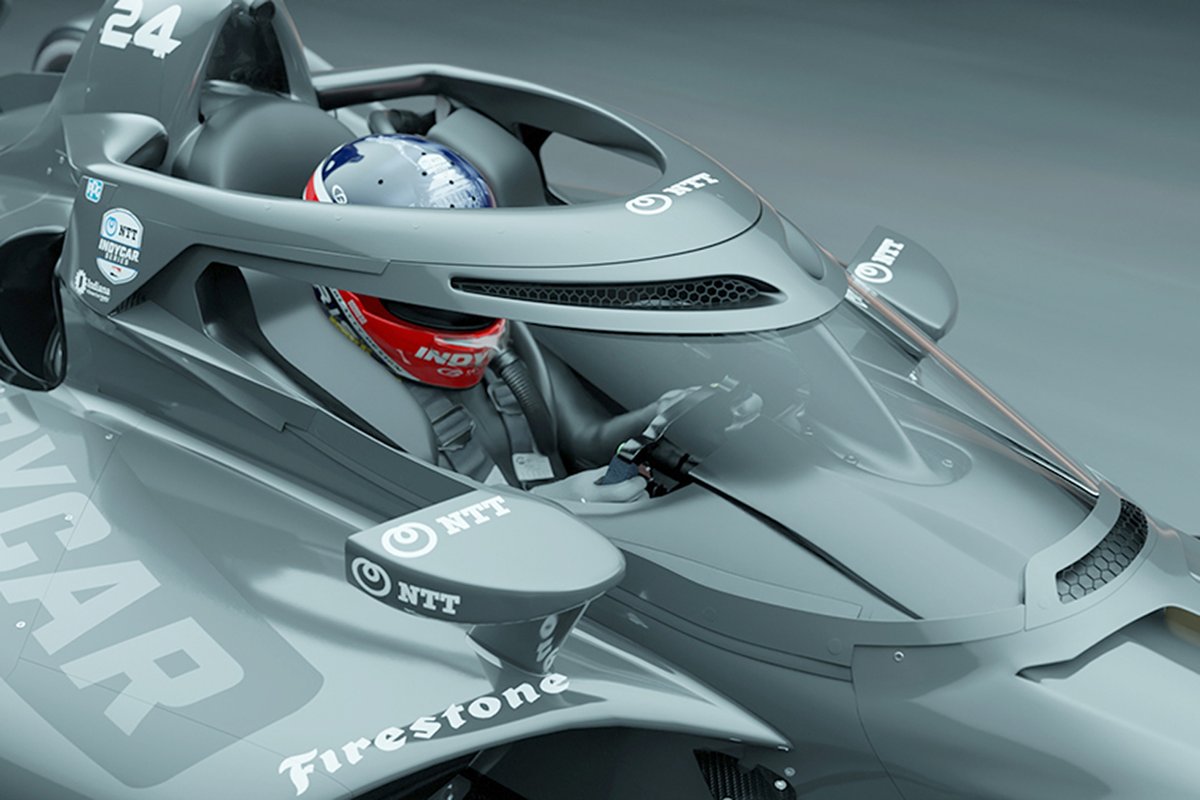
INDYCAR ROLLING OUT NEW VERSION OF AEROSCREEN FOR LONG BEACH
The IndyCar Series has revealed an updated and lightweight aeroscreen with a new design that also improves driver cooling in the cockpit.
The latest version comes ahead of schedule, with the original plan to implement it in the fourth points-paying round at the Indianapolis Motor Speedway road course on 10-11 May. However, with enough supply for the entirety of the grid, the decision was made to move up the timeline by two events.
After partnering with Red Bull Advanced Technologies, the series introduced the aeroscreen in 2020 as part of new safety enhancements. The device, mandated for ovals, permanent road courses and temporary street circuits, was constructed with a ballistic windscreen from PPG that is held with a titanium frame produced courtesy of Pankl.
The new and improved aeroscreen holds steady at 14.5 pounds, a drop from the first version which was 18.8 pounds.
The 3D-printed titanium frame, which was mandated at the beginning of the season and carries the same strength as its predecessor, also reduces weight by 6.8 pounds for a combined drop of 11.1 pounds.
An emphasis on driver cooling has also been a component of the revised product, with vents added and a top front duct that angles to the driver’s chest. The ducting has been 3D printed in rubber as a preventative measure to limit hand injuries in an accident.
The combination of weight reduction and safety improvements help reduce the downforce of the new aeroscreen by approximately 35 pounds, according to Tino Belli, the director of aerodynamic development for the IndyCar Series.
“One of the objectives of doing a 2.0 version was to save weight,” Belli said.
“Then we've taken that opportunity to also make the styling nicer, improve the driver ventilation, and make the thinner polycarbonate as strong as the thicker polycarbonate.”
The amount of heat held within the cockpit was a major talking point among drivers when the aeroscreen debuted. After an evaluation, it was deemed that ventilation could be added without a significant redesign.
There is also an option for teams to add a filter to the honeycomb mesh to help filter dust from entering the cockpit.
“We learned over the years where the limit of the vision was,” Belli said.
“In the first version, we were conservative. We gave them a wider field of vision. We found out that they didn't need it. So, now we’ve used that space to create a vent which comes underneath the titanium top frame, and it gets ducted down to blow air toward the driver’s chest.”
“The aeroscreen has been massively important as a total driver cockpit safety solution that has already paid huge dividends many times."
2024-04-16T18:19:18Z dg43tfdfdgfd